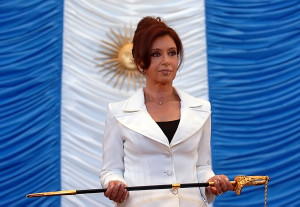The Road Toward Gender Equality: Women Leaders in Latin America
Many of today’s Latin American heads of state are women, but a closer look at how their positions of power affect attitudes about gender roles raises questions on whether there has been true change in the role of women in politics. Since 1990, six Latin American countries have elected women presidents and today women lead three of the largest countries in Latin America: Argentina, Brazil, and Chile. Women’s power extends beyond the executive branch: their representation in the region’s legislatures has grown from less than 10% in the 1990s to more than 20% today, and Cabinet appointments of women have almost tripled over the past 25 years from 8% to 22%.

While women remain underrepresented in Latin American politics, their presence in government is clearly growing – a remarkable feat considering the region’s track of exclusively male governments over the past few decades. Does this increase in representation of women indicate a structural change in gender and power mechanics?
A University of Tennessee study claims that support for female leadership, especially among men, is context dependent. This study also found that in countries where women fill many professional jobs and have more economic opportunities, male support for female leadership is lower. On the other hand, women tend to vote for and support women regardless of ideological and policy differences. Perhaps counterintuitively, the advancement of women in politics does not seem to produce broader society-wide shifts
One explanation for the inconsistent progress of women’s role in politics is the history of politics in Latin American societies. Argentina, Brazil, and Chile all have histories of instability, corruption and inefficacy within the government. All three countries also endured horrific military dictatorships supported by the United States in the 1970s and 80s. Thus, it is hard to reverse the mentality of mistrust in established hierarchies, and a desire for overturning these failed systems is often the driving force behind shifts in governance.
Furthermore, support for women in leadership is higher among women and men who are frustrated with the status quo. Dissatisfied voters will often support women because they are outsiders This would explain the series of left-leaning reforms observed in the region over the past 25 years. As women make gains, however, they lose their outsider status and thus no longer hold the support of those seeking a transformation from the unacceptable status quo. This would mean the growth of women’s representation in politics today should not be attributed to a change in gender roles in society as a whole, but rather to a desire for a fresh chance at change and improvement in the government.
That said, having women in positions of power opens up opportunities for more women in Latin America to not only act on their dissatisfaction with current governments but also to slowly transform the history of excluding women from politics and other aspects of society. Regardless of the reason they are there, women in political leadership can still be seen as a positive (though perhaps small) force towards gender equity in society as a whole.
